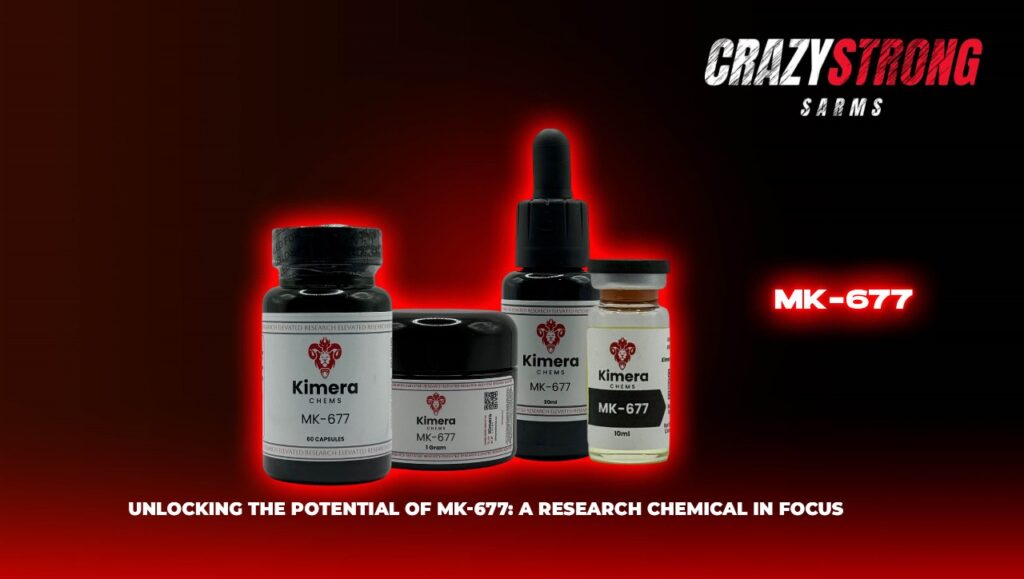Science is continuously searching for new instruments. Certain compounds possess effects that render them distinct. Among them, one has been identified as the MK-677 or Ibutamoren.
This compound is gaining popularity due to the way it operates in laboratories. It is researched to examine how growth hormone works, cell repair, and recovery. We will hence examine MK-677 in detail, including its mechanism of action and its potential significance to research.
Understanding MK-677
In several studies, MK-677 is known as Ibutamoren. It is a long-acting chemical that stimulates the ghrelin receptor. This receptor has also been referred to as the growth hormone secretagogue receptor.
MK-677 is one of the hormones that is imitated by this receptor. This increases the release of the growth hormone. It also raises the IGF-1 or Insulin-like Growth Factor 1. These two hormones play a significant role in growth and repair studies.
MK-677 is not a peptidic compound making it a rare aspect. It does not disintegrate like the peptide-based compounds. This renders it a consistent research model instrument requiring extended study durations.
How MK-677 Works in Research
The activity of MK-677 begins on the cellular level. It attaches to the pituitary gland and hypothalamus receptors. This causes pathways that enhance growth hormone pulses.
In contrast to direct administration of hormones, MK-677 stimulates the secretion of the body growth hormone in study animals. This is referred to as endogenous release. It enables feedback loops to remain active, as is the case in physiology studies.
The downstream effect is an increase in IGF-1. The IGF-1 aids in the growth and repair of tissues. MK-677 can be employed to investigate the nature of these changes in bones, muscles, and cells.
It also has a long-term effect. One dose in research has a duration of approximately 24 hours. This is useful in long-term experiments where the levels of the hormones must remain constant.
Research Areas for MK-677
MK-677 has primarily been studied on metabolism. Researchers have examined its impacts on protein mass, bone density and sleeping rhythm. The research models demonstrate the connection to the maintenance of muscles and bones. It has also been researched regarding the level of sleep.
MK-677 in Dental Research
Dentistry is one of the newer research areas related to MK-677. IGF-1 and growth hormone equally influence the growth and remodeling of oral hypodermis and bone.
In a dental clinic, bone strength is essential. Surgical practices such as implantation depend on healthy bone regeneration. Growth hormone assists bone-forming cells, commonly known as osteoblasts, to remain active. IGF-1 enhances bone remodeling.
The studies of MK-677 examine the effects of this medication on the teeth-supporting bone, the alveolar bone. Research can be done on socket healing that follows the removal of teeth or afterwards, with the integration of an implant. More rapid bone healing would be an improvement in dental models.
Ethical and Regulatory Context
MK-677 is a research chemical. It is not accepted as a consumable drug. Every activity done on it should be ethical and safe.
It is only used in controlled studies by the researchers. This also makes them accurate and within the limits of safe scientific practice.
Conclusion
In conclusion, one of the fascinating research chemicals in contemporary society is MK-677. It acts by stimulating growth hormone secretions and increasing IGF-1 levels. This prevents this method from being applicable in metabolic, sleep, and tissue repair research.
The contribution of this substance has been credited in dentistry. It is helpful in healing gums and bones after surgery or implants. With additional research in future, researchers can gain more valuable information on the substance specifically.

